 Michigan Stories: Mike Kelley and Jim Shaw
Michigan Stories: Mike Kelley and Jim Shaw
with essays by Steven L. Bridges and Carla Acevedo-Yates and interview by Marc-Olivier Wahler
MSU Broad
An excellent introduction to the works of internationally-renowned artists Mike Kelley and Jim Shaw that places Michigan—and Detroit and Ann Arbor in particular—at the core of their individual and collective artwork and ethos. Two brief essays and one interview make up the explanatory text, with another 366 pages devoted to their art as part of Destroy All Monsters (mostly credited to Cary Loren), during their individual careers in L.A., and the exhibit that motivated this book.
Collage, ephemera, serendipitous juxtaposition, and popular culture make up the art, which also includes drawings and paintings. The range of forms is one index of the energy suggested by the multiple objects seemingly ready to burst from the paper or box, as Kelley and Shaw apply art school academic ideas to ugly, mundane objects, much as the Romans did after tiring of Greek idealism in, say, sculpture.
 Night Train: Very Short Stories
Night Train: Very Short Stories
A. L. Snijders (Lydia Davis, trans.)
New Directions
Who better to translate the very short stories of a master of the form—A. L. Snijders—than another master of the form—Lydia Davis? Snijders has written 1,500 very short stories out of a total of 3,000 stories, and Night Train is the first time his work has been made available in English. Whether the very short story is an elaboration upon James Joyce’s notion of the epiphany or is a relatively logorrheic form of haiku, I don’t know, but epiphany and haiku seem to form the parameters of this format: concise depictions of dreams, events, exchanges with strangers, observations of animals on his land, and so forth.
As an example, here is the entirety of “Accountant”:
I walk through the floodplains of the Ijssel looking for my glass eye, which has fallen out of its socket. I find the eye and see the old man who is always thinking about camel drivers in Outer Mongolia and silkworms in the Chinese Empire. Standing eye to eye with him, I ask him if he is a dream. He nods. I ask him what a dream is. He says: ‘That you think you can see me with your glass eye.’ I ask: ‘Am I dreaming you right now?’ He says: ‘Yes, at this moment I’m sitting in my accounting office in Deventer—you do know I’m an accountant, don’t you?’
Charming, whimsical, and recommended.
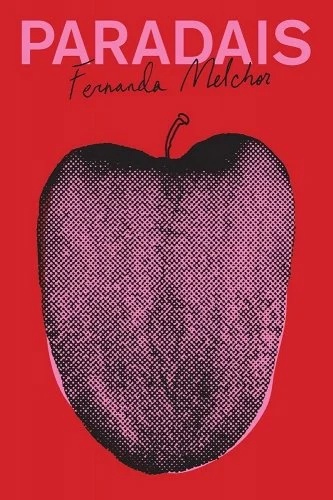 Paradais
Paradais
Fernanda Melchor (Sophie Hughes, trans.)
New Directions
Two boys—Franco Andrade and Polo—each around 16, have dropped out of school. The obese Franco lives with his grandparents in a walled-in subdivision for the wealthy; Polo works for the construction firm building the houses of the subdivision, doing such odd jobs for the residents as clearing vines, trees, and shrubs, cleaning up after the wealthy at their parties, and so forth. Until summer’s end, when Franco’s grandparents will ship him to a military academy, Franco spends most days in his bedroom playing video games and masturbating to porn. The rest of his time he spends ogling one of the neighbors—a Mexican TV star, Señora Marián—or getting drunk with Polo, blathering away for hours on end the many ways he intends to rape her. Polo is disgusted by Franco, his fat and his braggadocio, but he enjoys getting drunk on Franco’s dime, since he has no money.
Although Polo narrates the novel, he begins by establishing Franco’s character, the sole reason, Polo claims, for the unhappiness, let’s say, that eventually befalls a few innocent people. As the novel advances and the evidence mounts, we see that Polo is the sort of person who gets in his own way. After he drops out of high school, his mother arranges a job for him with the construction firm that has employed her since high school, all wages from which go directly to her bank account. Living with them is a promiscuous cousin whom, pregnant and unemployed, his meager salary also supports. He feels trapped in this situation, yet as much as he complains about it and his simple desire for a quiet life in freedom, his tragic flaw is refusing to take responsibility for his decisions.
This is a brief novel. The slow pace of first half builds its tension as Franco and Polo repeatedly obsess over their individual resentments towards others, their own respective lack of self-control echoed in their resentment of restraint in general. (Which is probably typical of 16-year-olds. But, of course, context affects levels of explosive toxicity.) Franco has a plan to make them both happy.
At the novel’s mid-point, author Fernanda Melchor steps on the accelerator—beginning with Polo’s cousin Milton warning him against working for narcos as a way to extricate himself from his dead-end life—steps on the accelerator, and whether, rapidly approaching, is a wall or an open road would be telling.
Kudos to Sophie Hughes, whose translation keeps the details vivid and the language idiomatic (in English) but in a way that also allows the mimicking of regional slang to sound natural.
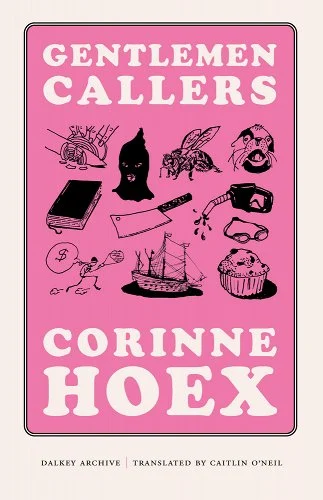 Gentleman Callers
Gentleman Callers
Corinne Hoex (Caitlin O’Neil, trans.)
Dalkey Archive
A pinch more than a month’s worth of erotic dreams, Corinne Hoex’s Gentleman Callers recalls 33 of the narrator’s intimate encounters with men, from a gas station attendant to a burglar. And, as in the waking world, not every lover she meets in a dream is a dream lover but, unlike the waking world, most are. Because the sex occurs in dreams, the descriptions of the narrator’s erotic encounters are more metaphorical than anatomically correct. Still, one gets the point, and favorably so.
Beyond that formal conceit, Hoex adds another: pairing each dream encounter with an epigram from a French writer, such as Baudelaire, Madame de Sévigné, Maupassant, and others, so that the erotic encounter is an elaboration upon the epigram. The dreams are short—only one or two pages each—but cover a lot a ground, as it were, and satisfactorily.
Fun, sexy, smart, and imaginative, just as a good lover (and book) should be.
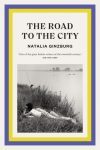 The Road to the City
The Road to the City
Natalia Ginzburg (Frances Frenaye, trans.)
Daunt Books
Originally published in Italy in 1947 and imbued with a post-war sensibility of recovering from devastation (although the war is not mentioned), The Road to the City is told from the point of view of Delia, a 17-year-old girl from a family of five, living in poverty on the outskirts of a city. It’s not clear where (or if) the father works, but nobody else in the family does. The family is verbally and physically abusive to each other (as presumably are their neighbors), prone to complaining about their miserable lives but unwilling to do anything to change those conditions. In the U.S. we would call them white trash, an impolitic term perhaps but one that captures the economic status and learned indolence of a people who have come to demand treatment beyond anything they have earned, dysfunctions buried in the term “low socio-economic status.”
Delia has decided to use the availability of her vagina to attract men of various and dubious means, not for immediate gain, as in prostitution, but for long-term gain, as in the potential life available to the wife of a doctor, a status she hopes to force if she becomes pregnant by the son of a doctor who is studying to become a doctor himself. In short, The Road to the City is the anti-House of Mirth, and Delia is its anti-Lily Bart. “Honor” and “moral code” does not exist for Delia. Who cares about the opinions of others when one is covered in a protective layer of fashionable dresses, a maid to raise the children one is indifferent to, and a husband who just wants peace in the house?
Ginzburg’s writing is clear and direct. Although Delia narrates the tale, she has little inner life so that readers generally have no insights into her thoughts, except at the most trivial level, which is consistent with her behavior. Readers can therefore understand better than Delia what she is up to and predict, more or less, the pathetic consequences of her selfish behavior. The novel is brief—under a hundred pages—with the brisk pace of a short story. A sort of compulsive awfulness propels the reader along a path that, depending on one’s point of view, is either upward or more of the same at a higher socioeconomic level.
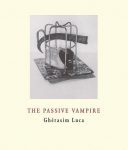 The Passive Vampire
The Passive Vampire
Ghérasim Luca (Krzysztof Fijalkowski, trans.)
Twisted Spoon Press
Originally published in 1945 as Romanian Ghérasim Luca’s exercise in surrealism, The Passive Vampire consists of two parts, “The Objectively Offered Object” and the eponymous “The Passive Vampire”—theory, with examples, and practice.
“Objectively offered objects,” aka O.O.O., consist of dissimilar items brought together, upon which the human brain, anxious to make sense of what lies before it, imposes an implication of relatedness so strained the results—what one makes of what is before oneself—are weird and dreamlike, like the effect created by Joseph Cornell’s boxes.
When introducing the concept of the O.O.O., Luca first seems to be creating an alternative form of Saussurian semiotics by imbuing common, mass-produced objects with a quasi-animist relationship between a subject and the object it sees. Luca sets to show how common items, when given and accepted as gifts, generate between the giver and receiver significant emotional bonds. But once this point in the narrative is reached and the examples begin, the Land of Surrealism has arrived with it bizarre and funny anecdotes related to various O.O.O.s Luca assembled and offered as gifts, the people they were meant for, what happened when the objects were offered, and so forth. The objects are as eccentric as the relationships.
The second, eponymous essay seems to itself be an O.O.O. to the reader, complimented by photographed instances of other O.O.O.s. (The placement of the visuals throughout the book is weird and arbitrary, apart from being sequential, often appearing many pages after their introduction and discussion.) Given the story’s fast pace, quickly turning and quirkily described subjects, I suspect that automatic writing may have factored into its composition.
Via the book’s footnotes, readers are also given insight into other actors in Romania’s surrealism scene at the time and their output. Kudos again to Twisted Spoon Presa and their translators for making available in English unknown or overlooked Central European writers.
 Mountainhead
Mountainhead
New Juche
Nine-Banded Books
Mountainhead is New Juche’s memoir of his time in Cambodia (or one part of it) in which be blends the lush vegetation of the rural mountainside with the dismal life of poverty, prostitution, drunkenness, feral ablutions in communion with nature, and lots of masturbation. Dissolute and self-destructive lives of ex-pats living in slums with prostitutes isn’t new but morbid fascination keep my eyes open to its documentation.
New Juche is not a sex tourist of underage girls pawned for cash by impoverished families but instead he prefers old, obese women and some men (and rather than pimps, with extended families to maintain): a bisexual who seems made of equal parts anger and awe (“awe” in a sense akin to William Burroughs’s love of sewer stench). His drug intake seems largely limited to alcohol and cigarettes, with an occasional petrol-huffing chaser, and his means of financial support are invisible. His descriptions of bar fights sound like the enactment of S. Clay Wilson drawings.
Mountainhead exemplifies a type of toxic masculinity you won’t find in the pages Hemingway, any more than you’ll find honest depictions of bull fights among them. Heterosexual men without women are not necessarily worse behaving than men with women, but in the degraded and degrading putrefaction of semi-lawless poverty, most behavioral restraints—even the disapproving eyes of neighbors—are lax, gone, or on leave.
 The Beginners
The Beginners
Anne Serres (Mark Hutchinson, trans.)
New Directions
About a woman, Anna, who, twenty years into a happy marriage with her husband, Guillaume, falls compulsively in love with another man, Thomas, whom she knows nothing about. Most of the novel deals with the inner debate she has over choosing one over the other, debate that includes the opinions of her female friends and an older couple she knows.
Her dithering over choosing one man over the other only increases the misery of all three. And just as the metaphoric pot for the characters seems set on eternal simmer, Guillaume leaves Anna, which comes unexpectedly because he has been presented as unperturbable and eternally patient. Both Anna and Guillaume turn out to have inner lives and needs the other was unaware of, no matter the compatibility that has sustained them for twenty years
After Guillaume leaves her, she continues dithering a bit over Thomas, too, but eventually ends up marrying Thomas and living a life that isn’t happily ever after but is which she feels is realistic because it contains pain, unlike her marriage to Guillaume. (Spoiler alert.)
 Eyes of the Rigel
Eyes of the Rigel
Roy Jacobsen (Don Shaw and Don Bartlett, trans.)
Biblioasis
With WWII over, the inhabitants of Barrøy have a routine going, almost to the point of thriving, rather than existing at subsistence level. Ingrid—whom readers of the Barrøy trilogy have followed from childhood to young adulthood and now her early 30s—decides to take her baby daughter, Kaya, and retrace the steps her lover and the baby’s father, Alexander, took when returning to Russia, steps she pieces together from bits and pieces of information she scrapes together along the way.
Ingrid and Kaja’s presence creates emotional upheaval wherever she spends the night and discovers along her way many mum Norwegians who collaborated with the Nazis and who wish to put knowledge of their smuggling activities behind them. Still, Ingrid’s patience exceeds the exasperation of the people she queries, and she succeeds in wresting out more crumbs of clues.
During Ingrid’s sojourn to find Alexander, she stays for a few days at a farm, where she meets another woman around her age, named Mariann. When Ingrid wonders aloud why her presence stirs up resentment wherever she goes, Mariann responds, “if anyone had searched as intensely for her as Ingrid had done for this Russian, lots of things would have been different.” Those Ingrid meets have no one living to reunite with, a fact only reinforced by her and Kaya’s presence, stirring up emotions about the war people would rather suppress. And she encounters people who still are evasive with Ingrid in the name of disguising their sins of omission, commission, or both during the war.
Will Ingrid, Kaja, and Alexander reunite? The conclusion challenges readers’ notions of what it means to have a happy ending.
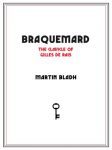 Braquemard: The Clavicle of Gilles de Rais
Braquemard: The Clavicle of Gilles de Rais
Martin Bladh
Amphetamine Sulphate
First some background and definitions: Gilles de Rais (1405-1440) was a French nobleman who once fought alongside Joan of Arc yet ended up being hanged for the serial rape, torture, and murder of hundreds of children, an avocation he seems to have taken up in earnest after retiring from military service, preying on children from the local countryside. Many of the events described were testified to; the people named in Braquemard actually lived; and despite the horrors of Rais’s crimes, his confession before execution saved him from excommunication, allowing him burial on church grounds. (There is some debate whether the crimes actually happened—despite testimony from locals—since no bodily remains have been found on the grounds of Rais’s castle, as they were said at the time to have been buried. Bladh ignores all that.)
A “clavicle” in the sense used here is a key or, because this is an occult book, a grimoire, filled with sigils to accompany incantations of angels who oversee the ritual murders Rais commits. The braquemard is a type of “short, thick, double-edged sword” (the phrase is repeated in whole throughout the book) with which Rais committed his crimes.
Spoiler alert / deal breaker: Profusely illustrated throughout, the renderings, we are assured, in the author’s own blood.
The book has three parts, “The Robber Baron,” “The Mystery of the Holy Maid; or, The Slaughter of the Holy Innocents,” and “The Clavicle.” “The Robber Baron” occurs in a goth setting told in a fairy-tale tone about of one boy Rais takes a liking to. Life among the Baron (Gilles de Rais) and his army of boys is presented (unconvincingly) as a sodomy-free zone, a lack made up for by the levels of violence each boy is expected to wreak on innocents, much in the currently manner of the murderous narcos that Mexico contends with. The boy sold into the Baron’s services, minds his Ps and Qs, obeys unhesitatingly, and works his way of the ranks. The fate of those who displease the Baron in any way is something each boy hopes to defer as long as possible.
“The Mystery of the Holy Maid; or, The Slaughter of the Holy Innocents,” is a play of sorts, performed on a moveable stage, lasting seven days, one day for each of its parts, making seven stops each day, repeating seven times each day, each stop culminating in the torture and execution of a child and the self-flagellation of Herod (the play’s stand-in for Rais), which, on the seventh day, becomes his self-immolation.
The last part, “The Clavicle,” is structured so: First, a boy is named to be tortured to death; the body part is identified to be dismembered for use as a relic, buried under the church floor; angel is named to be invoked during the ceremony; and a sigil to be drawn for the ritual is shown. Second, mixing Christianity with Satanism, an incantation is spoken to invoke an angel in the name of God while forcing the angel to submit to Gilles de Rais’s power and approve of the murder Rais is about to commit. Third, the spirit of the murdered child describes what happens. And fourth, de Rais assesses the spiritual quality of the child murdered, accompanied by a Rorschach-like blot of blood on the facing page. These four steps are repeated several more times until Rais is stopped.
More than a horror story or weird tale, Matin Bladh’s Braquemard repeats in three sections the (alleged) crimes of Gilles de Rais, each in deeper, more honest, and evil detail than its predecessor, peeling away levels of abstraction to arrive not at Truth but a delirium that is visceral.
